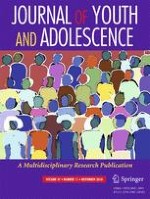01-09-2018 | Empirical Research
Stability and Change of Bullying Roles in the Traditional and Virtual Contexts: A Three-Wave Longitudinal Study in Chinese Early Adolescents
Gepubliceerd in: Journal of Youth and Adolescence | Uitgave 11/2018
Log in om toegang te krijgenAbstract
Traditional bullying and cyberbullying are two prevalent phenomena among adolescents around the world. Typically, bullying incidents involve distinct perpetrator and victim roles. However, the question whether participants’ roles in bullying situation remain stable or changeable is unclear. The present study examined the developmental stability and change of bullying roles by simultaneously investigating adolescents’ bullying behaviors both in the traditional and virtual contexts. Participants were 661 seventh- and eighth-grade students (39.0% girls) aged 11–15 years (M = 12.86, SD = .73) in China. They completed a survey measuring their experiences in perpetration and victimization of traditional bullying and cyberbullying at three time points with 6-month intervals. A cross-lagged panel design was used to test for the temporal sequence of research variables. The results showed a moderate consistency in the bullying roles that students took on (i.e., perpetrator and victim) over time. Traditional bullying perpetrators continued to bully others online, whereas cyberbullying victims continued to be bullied offline. Regarding role change in bullying, perpetrators and victims did not change their roles in traditional bullying situation, but they tended to change their roles to the opposites in cyberbullying situation. Traditional bullying victims were more likely to become cyberbullying perpetrators, and vice versa. Traditional bullying perpetrators also had a greater tendency of being bullied online, but not vice versa. The findings suggest that interventions aimed at reducing adolescents’ bullying behaviors should focus on the stability and change of bullying roles in the traditional and virtual contexts.
